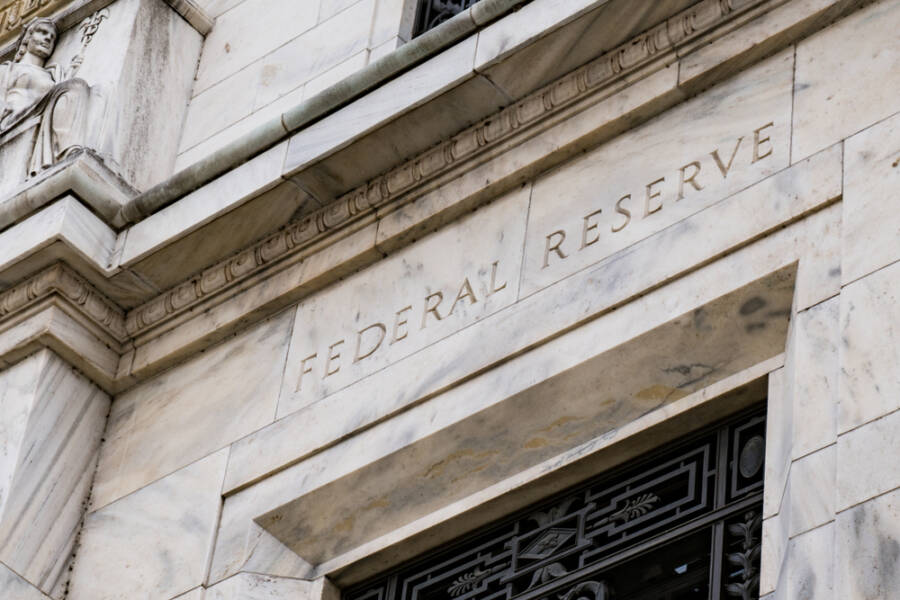Trump could be the US president again. Here’s what economic changes he’s planning to make should he win the elections.
It might not reach the legendary level of the 1975 “Thrilla in Manilla” heavyweight boxing contest between Joe Frazier and Muhammad Ali, but this year’s rematch is definitely going to be historical: Joe Biden, the president, vs. former president Donald Trump in November.
And with that, there is a sharp contrast between two opposing economic ideologies: the government-as-agent mentality of Biden that has prevailed for the past three, almost four, years and the populist, deregulatory approach that defined the Trump economic agenda from 2017 until the COVID-19 pandemic intervened.
Biden’s failures and successes are well known by now: the better-than-expected economic boost, the strong performance of the labor market, and the huge investments in such areas as electric vehicles and semiconductor manufacturing.
But also, the massive fiscal stimulus that some experts blame for the inflation that exploded in late 2021 is only now going back to pre-pandemic levels. All in all, Biden’s economic changes draw less than favorable reviews from voters.
When it comes to Trump, the question is what lessons has the former chief of state learned and whether a Trump 2.0 term would bring more of the same or some path to a new direction.
In a recent interview with CNBC, Trump offered a preview of the economic changes he is planning to make if he gets the keys to the White House again. Keep reading to find out what you might expect if Trump is re-elected!

1. Immigration crackdown
The Republican Party has made a controversial issue out of immigration, and Donald Trump is no exception. At times during his presidential term, he has threatened mass deportations and “ideological screening” of immigrants, whom he has described as “poisoning the blood of our nation.”
Such a crackdown could worsen what is already a tight labor market as Americans continue to retire rather later in life and the birth rate isn’t sufficient to match the demand for new workers.
Experts point out that while a Democratic Senate could conceivably limit Trump’s policy options, there’s very little chance that immigration will rise from today’s historic levels over the next four years. If we get to experience a new Trump campaign with economic changes like this one, labor force growth will slow.
Some experts explained that immigrants increase the demand and supply sides of the economy, expanding employment opportunities for everybody. The immigrants being targeted for removal are a key element of several parts of the US economy.
Any economic changes that imply their deportation will instead urge US business owners to start fewer new businesses or cut back. In some cases, they may even shift their investments to less labor-intensive industries and technologies and scale back production to reflect the loss of consumers for their products.
According to recent research conducted by an economics team at the University of Colorado, for every 1 million immigrant workers deported from the United States, 88,000 native Americans lose their jobs.

2. Import tariffs
During the “Squawk Box” morning market show, Trump described himself as a “big believer in tariffs,” and he gave two reasons for why. No. 1: According to the former president, tariffs are a must when “you’re being taken advantage of by other countries” economically.
Trump offered the example of China, stating that the country took advantage of the US on steel. Moreover, he pointed out that China was destroying our entire steel industry, which had never performed well for more than 25 years. Trump’s input on the matter: the industry has been eaten alive by foreign competition, and China did nothing but dump steel.
Among the economic changes the former president has planned is the idea of targeted tariffs along with an overall import duty of 10% on all goods entering the country. A lot depends on the details, and Congress would most likely have to approve them.
Even though Trump repeatedly claims that China covered the costs of his earlier tariffs, economic experts generally see tariffs as a tax on Americans—and to some extent, they lead to higher inflation.
According to economists, such a tariff and potential retaliatory tariffs from other countries would spike the price of imported goods. While it’s still unclear how economic changes like this one would affect the inflation rate, one thing is for sure: a steep tariff would harm both American producers and consumers.
Patrick Kilbane, wealth advisor and general counsel at Ullmann Wealth Partners Group, says that the former president says a lot of things and carries on with a lot of things, but he also “doesn’t follow through on a lot of things.” In other words, there’s uncertainty when it comes to the economic changes Trump has in mind, so we can expect many scenarios.
Kilbane also points out that Trump will find Congress isn’t always going to agree with his economic changes, even within the Republican Party. He gave the example of when members of Trump’s party voted down the repeal of the Affordable Care Act.
Keep reading to discover other economic changes Trump wants to make should he become president again!
3. Tax-cut fever
Cutting taxes, especially on high-income individuals and corporations, has long been a characteristic of Republican economic policy. In 2017, Donald Trump won a $1.7 trillion tax cut from Congress. While economic experts often agree about whether tax cuts are good for the economy, there’s little argument that they add to the country’s debt if they aren’t offset with other cuts or revenue optimization.
The Trump tax cuts are scheduled to expire in 2025, offering the Trump 2.0 administration the chance to fight that battle again. Once put in place, tax cuts are often hard to take away, and a lot will depend on who controls the House and Senate. In contrast, Biden continues to propose raising taxes on the wealthy.
The corporate tax rate will be the hot topic of debate. The rate was lowered from 35% to 21% as part of the 2017 economic changes. Trump has said he would want to see it maintained at that level, while the current president has proposed raising it to 28%.
In an extensive report recently issued, Allianz Research showed that the combination of economic changes Trump has in mind would affect consumers and potentially unnerve financial markets. The study also noted that much depends on exactly how those changes are implemented.
According to the report, a second Trump presidency would take over huge fiscal deficits from the Biden Administration, spiking interest expenses and creating an economy that is likely more prone to bouts of inflation.

4. The Federal Reserve
In his first term, Donald Trump chose Federal Reserve Chairman Jerome Powell, an Obama appointee, as governor as part of the economic changes made during his presidency. Powell was eventually made chairman by Trump and reappointed by Biden. In 2019, Trump was upset that Powell wasn’t doing enough to stimulate the economy and lower interest rates.
He famously said that he didn’t know whether Powell or Chinese President Xi Jinping was the “bigger enemy” of the US. In february 2024, Trump told Fox Business News host Maria Bartiromo he wouldn’t reappoint Powell should he win the White House again.
Even though the Fed is avowedly nonpolitical, some fear that Trump might give the powerful post of chairman to a friend or political associate in the event of a vacancy.
If you liked our article on the economic changes might happen should Trump become president again, you may also want to read Trump’s Promises for 2024: What You Need to Know. Also, if you want to learn more about the psychology of Trump, this documentary will help you understand better who is the former president.







